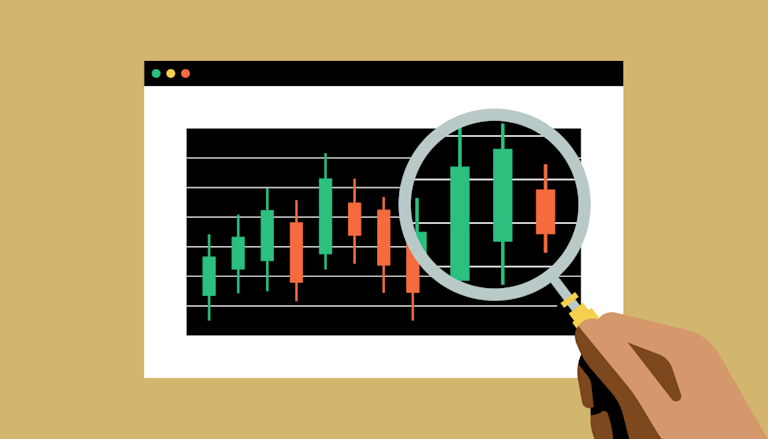seekingalpha.com
Understanding Trading Crypto Indicators for Successful Crypto Trading

Understanding Trading Crypto Indicators for Successful Crypto Trading
In the fast-paced world of cryptocurrency trading, having the right tools and strategies is essential for success. One of the most valuable tools in the trader’s arsenal is trading crypto indicators. These indicators help traders analyze market conditions, identify trends, and make informed trading decisions. If you’re looking to enhance your trading strategy, understanding how to use these indicators effectively is crucial. In this article, we will delve into the various types of trading crypto indicators, their applications, and how they can help you navigate the complexities of the cryptocurrency market. For more insights related to financial strategies, check out this Trading Crypto Indicators https://seekingalpha.com/article/43728-the-wall-street-analyst-forum-august-conference-schedule.
The Importance of Trading Indicators
Trading indicators are statistical tools that analyze historical data to forecast future price movements. They are instrumental in a trader’s decision-making process. By employing indicators, traders can gain insights into market sentiment, potential entry or exit points, and overall market direction. The significance of trading indicators lies in their ability to simplify complex data into manageable information that can guide trading decisions.
Types of Trading Crypto Indicators
There are numerous indicators available, but they can be broadly categorized into two main types: trend indicators and oscillators.
Trend Indicators
Trend indicators help traders identify the direction of the market. They are crucial for determining whether to buy or sell. Some popular trend indicators include:
- Moving Averages: These are perhaps the most widely used indicators. Moving averages smooth out price data to create a trend-following indicator. They can be simple, exponential, or weighted. Using moving averages can help traders determine support and resistance levels.
- Average Directional Index (ADX): The ADX measures the strength of a trend without indicating its direction. It helps traders identify whether a market is trending or ranging.
- Parabolic SAR: This indicator helps traders set trailing stop-loss levels. When the price is above the parabolic SAR, it signifies an uptrend, and below it indicates a downtrend.

Oscillators
Oscillators are indicators that fluctuate within a specific range, typically between 0 and 100. They are useful for identifying overbought or oversold conditions in the market. Some key oscillators include:
- Relative Strength Index (RSI): The RSI measures the speed and change of price movements. It identifies overbought or oversold conditions, giving traders signals to buy or sell.
- MACD (Moving Average Convergence Divergence): The MACD is a trend-following momentum indicator that shows the relationship between two moving averages. It is used to identify potential buy and sell signals.
- Stochastic Oscillator: This indicator compares a particular closing price of a cryptocurrency to a range of its prices over a specific period. The Stochastic Oscillator helps identify overbought and oversold conditions.
How to Use Trading Indicators Effectively
While trading indicators can provide valuable insights, they are not foolproof. Here are some strategies to use them effectively:
- Combine Indicators: Relying on a single indicator can be misleading. Combining different indicators can provide a more comprehensive view of the market. For example, using both a trend indicator and an oscillator can help confirm signals.
- Backtesting: Before applying indicators in real-time trading, backtest them with historical data to see how well they would have performed. This process can help you understand the strengths and weaknesses of your chosen indicators.
- Stay Informed: The cryptocurrency market is highly volatile and influenced by various external factors. Stay updated on market news, trends, and events that could impact prices.
- Risk Management: Always use proper risk management techniques. Even with indicators, losses can occur. Set stop-loss levels and adhere to them to protect your capital.
Common Mistakes To Avoid
While utilizing trading indicators, traders often make mistakes that can jeopardize their trading strategies. These include:
- Over-Reliance on Indicators: Many traders put too much faith in indicators without considering other factors, such as market sentiment or fundamental analysis. Indicators should complement your overall strategy, not be the sole decision-making tool.
- Ignoring Market Conditions: Markets can behave differently under varying conditions. For example, indicators may yield false signals during periods of high volatility. Understanding the context in which you are trading is essential.
- Neglecting to Adapt: The cryptocurrency market is constantly evolving. What works today may not work tomorrow. Remain adaptable and be willing to modify your approach as the market changes.
Conclusion
Trading crypto indicators are invaluable tools for navigating the complex world of cryptocurrency trading. By understanding their various types and effective applications, traders can gain a significant edge in their trading strategies. Remember to combine indicators, conduct backtesting, and stay informed about market conditions for optimal results. As with any trading approach, maintain a disciplined risk management strategy and avoid common pitfalls. With practice, you can harness the power of trading indicators to make informed trading decisions and increase your chances of success in the bustling crypto market.



 English
English